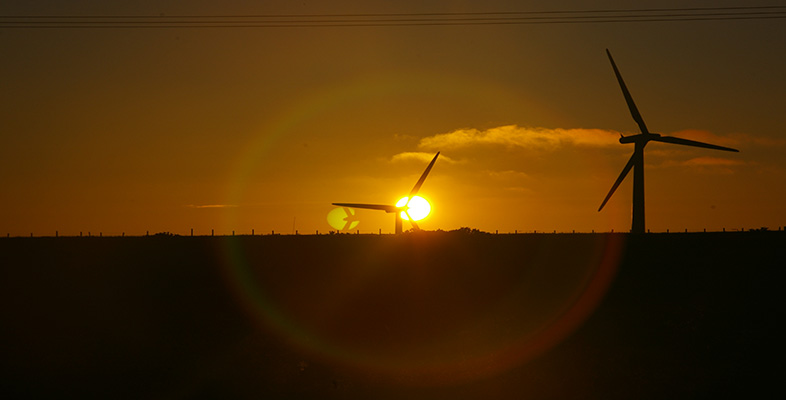6.6.1 The Royal Commission on environmental pollution scenarios
The UK's Royal Commission on Environmental Pollution produced (RCEP) its 22nd report Energy: the Changing Climate in June 2000. The Commission examined what changes would be needed in Britain's energy systems if, as suggested by the various reports of the Intergovernmental Panel on Climate Change (IPCC, 2001), it should prove necessary to reduce the country's emissions of greenhouse gases by about 60 per cent by 2050.
The Commission investigated the various possibilities very thoroughly and summarised them in four 'scenarios' for 2050. Scenarios are not predictions of what will happen, but plausible outlines of what could happen, under given conditions. In all four scenarios, the overall contribution from fossil fuels is reduced to approximately 40 per cent of current consumption, consistent with the 60 per cent reduction in fossil fuel use required to achieve a 60 per cent cut in CO2 emissions.
The RCEP scenarios are summarised in Box 4. They demonstrate that it would be feasible for the UK to progress towards much greater sustainability (in terms of reducing CO2 emissions) in its energy systems over the next 50 years. They also show that there are a number of ways in which this could be achieved.
Box 4: Four energy scenarios for the UK in 2050
Four scenarios were constructed to illustrate the options available for balancing demand and supply for energy in the middle of the twenty-first century if the UK has to reduce carbon dioxide emissions from the burning of fossil fuels by 60 per cent.
Scenario 1: no increase on 1998 demand, combination of renewables and either nuclear power stations or large fossil fuel power stations at which carbon dioxide is recovered and disposed of.
Scenario 2: demand reductions, renewables (no nuclear power stations or routine use of large fossil fuel power stations).
Scenario 3: demand reductions, combination of renewables and either nuclear power stations or large fossil fuel power stations at which carbon dioxide is recovered and disposed of.
Scenario 4: very large demand reductions, renewables (no nuclear power stations or routine use of large fossil fuel power stations).
The key parameters for these four scenarios are as follows:
| Scenario 1 | Scenario 2 | Scenario 3 | Scenario 4 | |
|---|---|---|---|---|
| Percentage reduction in 1997 carbon dioxide emissions | 57 | 60 | 60 | 60 |
| DEMAND (percent reduction from 1998 final consumption) | ||||
| • low-grade heat | 0 | 50 | 50 | 66 |
| • high-grade heat | 0 | 25 | 25 | 33 |
| • electricity | 0 | 25 | 25 | 33 |
| • transport | 0 | 25 | 25 | 33 |
| • Total | 0 | 36 | 36 | 47 |
| SUPPLY (GW) (Annual average rate) | ||||
| • fossil fuels | 106 | 106 | 106 | 106 |
| • intermittent renewables | 34 | 26 | 16 | 16 |
| • other renewables | 19 | 19 | 9 | 4 |
| • baseload stations (either nuclear or fossil fuel with carbon dioxide recovery) | 52 | 0 | 19 | 0 |
The actual outcome over coming decades will depend on the extent to which we change our lifestyles and our technologies in order to conserve energy; how effective we are in generating and using it more efficiently; how rapidly we choose to develop and deploy renewable energy sources; how large a role we choose to give to nuclear power; and whether or not we decide to implement carbon sequestration and other technologies for 'cleaning-up' fossil fuels.
